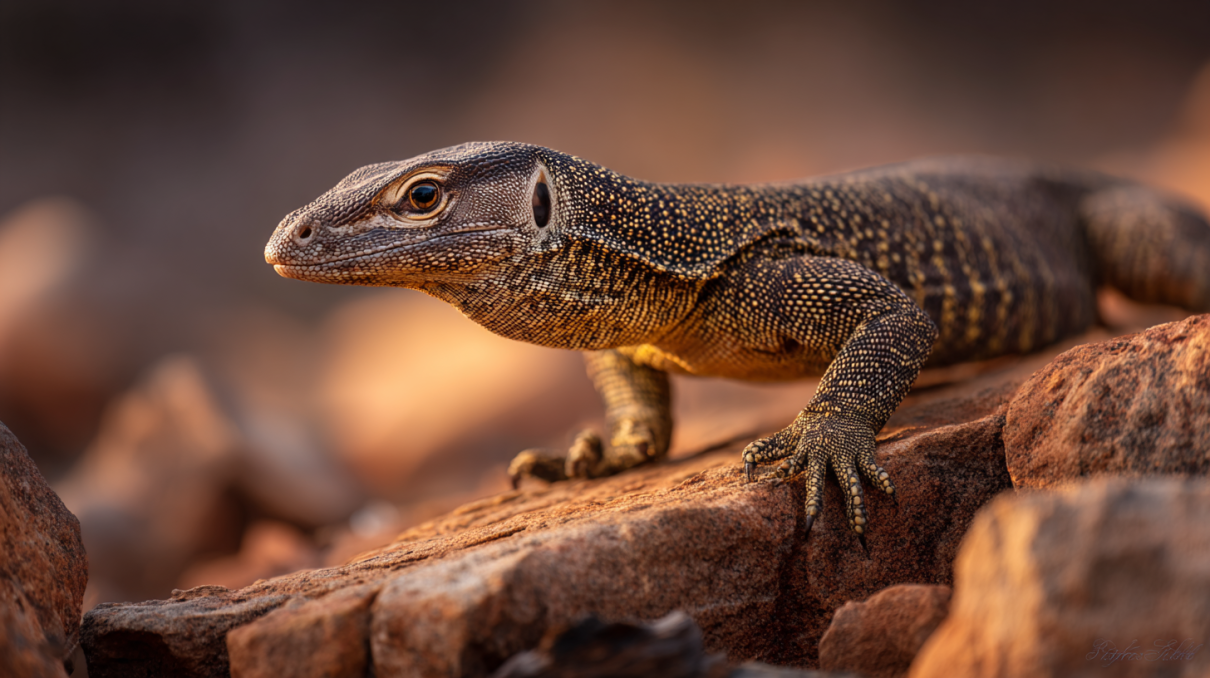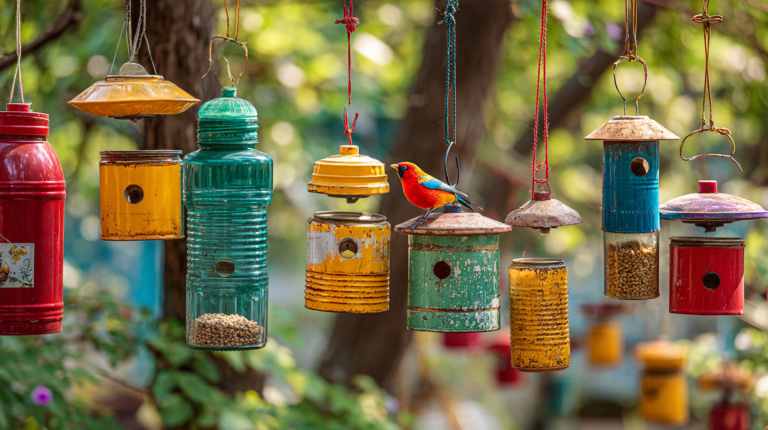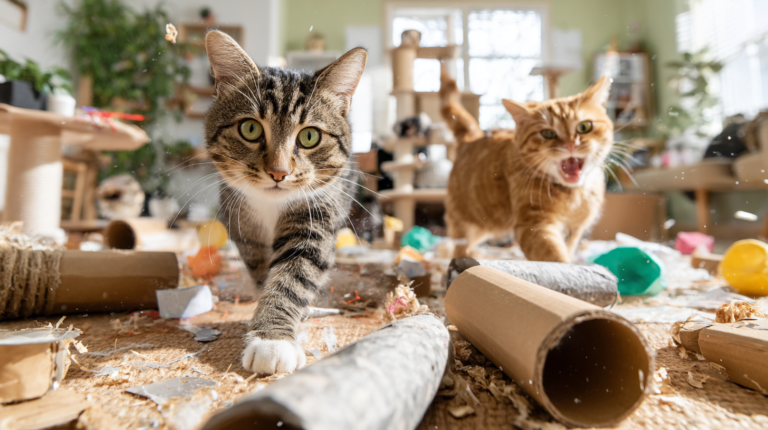Find reputable Ackie Monitor Lizard for Sale from top US breeders. Complete care guide covering housing, feeding, health, and setup costs. Expert advice for monitor lizard keepers.
Table of Contents
Did you know that Ackie monitor lizards are considered one of the most intelligent reptile species, capable of recognizing their owners and even learning simple tricks? If you’re searching for an Ackie Monitor Lizard for Sale, you’re about to embark on an exciting journey with one of Australia’s most fascinating native reptiles. These remarkable creatures, also known as Ridge-tailed monitors or Spiny-tailed monitors, have gained tremendous popularity among reptile enthusiasts worldwide due to their manageable size, engaging personalities, and stunning appearance.
Finding a reputable breeder when looking for an Ackie Monitor Lizard for Sale is crucial for ensuring you bring home a healthy, well-socialized pet. Unlike many other monitor species that can grow to intimidating sizes, Ackie monitors typically reach only 24-28 inches in length, making them ideal for experienced reptile keepers who want the monitor experience without the space requirements of larger species. Their vibrant yellow and brown patterns, coupled with their active daytime behavior, make them one of the most rewarding reptiles to keep in captivity.
When I first started researching monitor lizards five years ago in Colorado, I was overwhelmed by the different species available. After visiting several reptile expos and speaking with experienced breeders, I quickly realized that Ackie monitors offered the perfect balance of size, temperament, and care requirements that I was looking for. Their intelligence and interactive nature completely changed my perspective on reptile keeping.
Understanding Ackie Monitor Lizards: What Makes Them Special
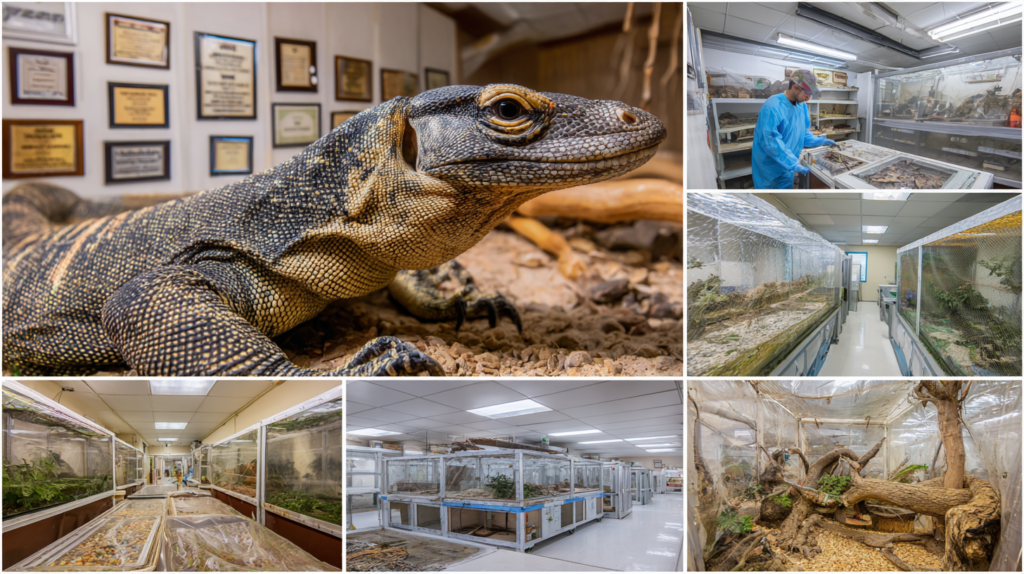
Ackie monitor lizards (Varanus acanthurus) are native to the arid regions of Australia, where they’ve adapted to thrive in rocky outcrops and semi-desert environments. These remarkable reptiles are part of the monitor family (Varanidae), which includes the famous Komodo dragon, though Ackies are significantly smaller and more manageable for private ownership.
What sets Ackie monitors apart from other reptile species is their exceptional intelligence and personality. Unlike many lizards that are primarily display animals, Ackies actively interact with their environment and can form genuine bonds with their keepers. They display complex behaviors such as basking rituals, territorial displays, and even play-like activities that make them fascinating to observe.
Their natural habitat consists of rocky areas with plenty of hiding spots, which directly influences their captive care requirements. Understanding these natural behaviors is essential when searching for an Ackie Monitor Lizard for Sale, as it helps you prepare appropriate housing and enrichment for your future pet.
Ackie Monitor Breeder Comparison
| Breeder | Location | Price Range | Specialization | Shipping | Guarantee |
|---|---|---|---|---|---|
| Underground Reptiles | Florida | $250-$400 | Genetic Diversity | Nationwide Overnight | Live Arrival |
| LLLReptile | California | $300-$500 | Color Selection | West Coast Focus | Health Guarantee |
| The Bio Dude | Louisiana | $350-$450 | Bioactive Raised | Regional Shipping | 7-Day Health |
| Backwater Reptiles | Multiple | $275-$425 | Online Convenience | North America | 7-Day Health |
| CB Reptile | Multiple | $300-$475 | Expo Presence | Event Pickup | Health Records |
The 5 Top Breeders for Ackie Monitor Lizards
1. Underground Reptiles – Nationwide Shipping Excellence
Underground Reptiles has established itself as one of the premier sources for Ackie Monitor Lizard for Sale across the United States. Founded in 1999, this Florida-based operation has built a reputation for producing healthy, well-started juveniles with excellent genetic diversity.
Why They Stand Out:
- Live arrival guarantee with overnight shipping
- Extensive health screening protocols
- Over 20 years of breeding experience
- Active community support and care guidance
- Competitive pricing ranging from $250-$400 for juveniles
Underground Reptiles focuses on producing robust animals that adapt well to captive conditions. Their breeding program emphasizes genetic diversity, which results in healthier animals with fewer hereditary issues. Customer reviews consistently praise their communication and post-sale support.
2. LLLReptile – West Coast Specialist
Based in California, LLLReptile has been a cornerstone of the reptile community since 1979. Their Ackie Monitor Lizard for Sale program focuses on producing animals with exceptional coloration and temperament.
Key Features:
- Strict quarantine protocols
- Hand-selected breeding stock from multiple bloodlines
- Comprehensive care sheets included with every purchase
- Local pickup available at multiple California locations
- Price range: $300-$500 for quality juveniles
LLLReptile’s strength lies in their selective breeding approach. They maintain detailed records of each animal’s lineage, ensuring buyers receive Ackies with known genetics and health history. Their facility tours are available by appointment, allowing potential buyers to see their operation firsthand.
3. The Bio Dude – Bioactive Specialists
The Bio Dude has revolutionized reptile keeping with their bioactive approach, and their Ackie Monitor Lizard for Sale program reflects this innovation. Based in Louisiana, they not only provide exceptional animals but also complete ecosystem setups.
Unique Advantages:
- Animals raised in naturalistic bioactive environments
- Complete habitat setup packages available
- Educational resources and ongoing support
- Social media presence with regular updates
- Juvenile pricing: $350-$450
What makes The Bio Dude special is their holistic approach to reptile keeping. Their Ackies are raised in environments that closely mimic their natural habitat, resulting in animals that display more natural behaviors and adapt more easily to bioactive setups.
4. Backwater Reptiles – Online Convenience
Backwater Reptiles offers one of the most convenient online shopping experiences for those seeking an Ackie Monitor Lizard for Sale. Their user-friendly website and comprehensive shipping network make them accessible to buyers across North America.
Notable Features:
- Extensive online inventory with real-time availability
- Multiple payment options including financing
- Educational blog with species-specific care guides
- 7-day health guarantee
- Competitive pricing: $275-$425
Backwater Reptiles excels in customer service and convenience. Their website provides detailed information about each available animal, including photos and basic health records. They also offer a unique “lizard finder” service for customers seeking specific traits or colorations.
5. CB Reptile – Quality and Consistency
CB Reptile has built a solid reputation for producing consistently high-quality Ackie monitors. Their Ackie Monitor Lizard for Sale program emphasizes healthy, well-started animals that are ready to thrive in their new homes.
Distinguishing Qualities:
- Focus on captive-bred animals only
- Transparent health records and genetic information
- Active presence at reptile expos nationwide
- Educational seminars and workshops
- Price range: $300-$475 for juveniles
CB Reptile’s commitment to captive breeding helps support conservation efforts while ensuring customers receive animals adapted to captive conditions. Their educational approach helps new keepers succeed with their Ackie monitors.
Ackie Monitor Care Requirements
| Care Aspect | Juvenile Requirements | Adult Requirements | Critical Notes |
|---|---|---|---|
| Enclosure Size | 4′ x 2′ x 2′ minimum | 6′ x 2′ x 3′ minimum | Larger always better |
| Basking Temperature | 115-125°F | 120-130°F | Essential for digestion |
| Cool Side Temperature | 75-80°F | 80-85°F | Gradient crucial |
| Humidity Level | 50-60% | 40-60% | Monitor with hygrometer |
| UVB Lighting | 10-12% UVB | 10-12% UVB | Replace annually |
| Feeding Frequency | Daily | Every other day | Monitor body condition |
| Substrate Depth | 4-6 inches | 6-8 inches | For burrowing behavior |
Essential Considerations When Buying an Ackie Monitor
Health Indicators to Look For
When evaluating an Ackie Monitor Lizard for Sale, certain health indicators can help you identify a quality animal. A healthy Ackie should have bright, alert eyes without discharge or cloudiness. The skin should appear clean and well-hydrated, with no signs of stuck shed or unusual discoloration.
Active behavior is crucial – healthy Ackies are naturally curious and alert. They should respond to movement and show interest in their environment. Avoid animals that appear lethargic, have difficulty moving, or show signs of respiratory distress such as mouth breathing or wheezing.
The animal’s body condition is equally important. A healthy Ackie should have good muscle tone and appropriate weight for its size. The tail should be full and rounded, as the tail is where these lizards store much of their energy reserves.
Age and Size Considerations
Most reputable breeders offer Ackie Monitor Lizard for Sale as juveniles between 3-6 months old. This age range provides the best balance between hardiness and socialization potential. Younger animals may be more fragile, while older juveniles are typically well-established and easier to care for.
Size at purchase can vary significantly, but most juveniles range from 8-12 inches total length. Avoid unusually small animals for their age, as this may indicate health issues or poor nutrition during development.
Setting Up Your Ackie Monitor’s Habitat
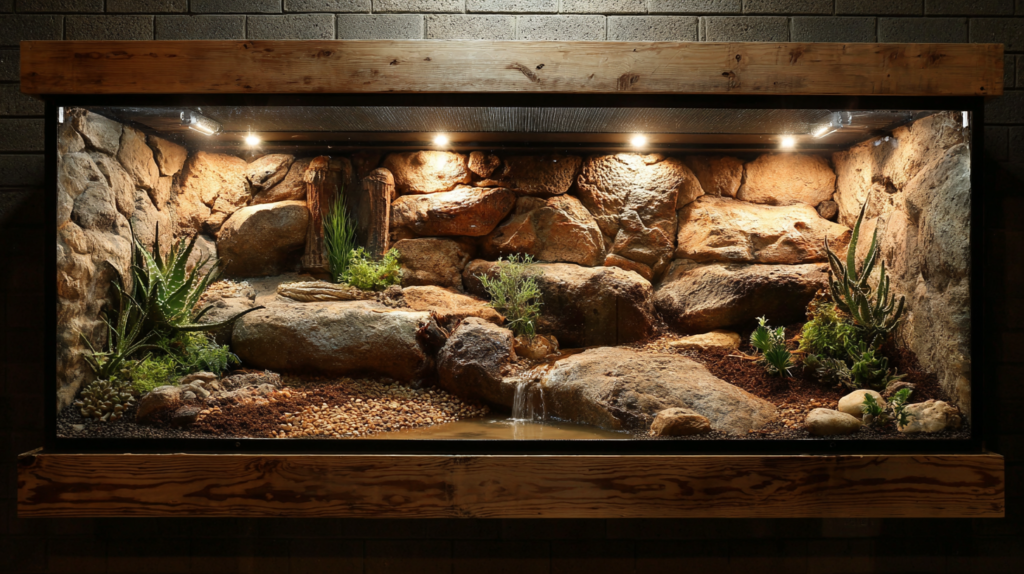
Enclosure Requirements
Before bringing your Ackie Monitor Lizard for Sale home, proper habitat preparation is essential. Adult Ackies require substantial space – a minimum of 6 feet long, 2 feet wide, and 3 feet tall for a single adult. Larger enclosures are always better and allow for more natural behaviors.
The enclosure should include both hot and cool zones, with basking temperatures reaching 120-130°F and cool side temperatures around 80-85°F. Nighttime temperatures can drop to 75-80°F. These temperature gradients are crucial for proper digestion and thermoregulation.
Substrate choice is important for both functionality and naturalistic appearance. Options include cypress mulch, organic topsoil mixtures, or specialized bioactive substrates. Avoid cedar, pine, or any aromatic wood products that can cause respiratory irritation.
Lighting and Environmental Needs
Proper UVB lighting is essential for calcium metabolism and overall health. Use a high-quality UVB fluorescent tube or mercury vapor bulb that provides UVB across 70% of the enclosure length. Replace UVB bulbs every 12 months, even if they still appear to be working.
Humidity levels should be maintained between 40-60%, which can be achieved through regular misting and water features. A large, shallow water dish provides drinking water and helps maintain ambient humidity levels.
Feeding Your Ackie Monitor: Nutrition Essentials
Diet Composition and Feeding Schedule
Ackie monitors are primarily insectivorous, with their diet consisting mainly of insects, small vertebrates, and occasional eggs in the wild. In captivity, a varied diet of appropriately sized insects forms the foundation of their nutrition.
Primary food items include crickets, dubia roaches, locusts, and mealworms. Adult Ackies can also consume pinkie mice, quail eggs, and commercial monitor diets as supplemental nutrition. Variety is key to preventing nutritional deficiencies and maintaining interest in feeding.
Juveniles should be fed daily, while adults can be fed every other day. Portion sizes should be appropriate for the animal’s size – offer insects that are no larger than the space between the monitor’s eyes.
Supplementation and Vitamin Requirements
Proper supplementation is crucial when feeding your Ackie Monitor Lizard for Sale. Dust insects with calcium powder at every feeding, and use calcium with vitamin D3 once or twice weekly. A general reptile multivitamin should be used once weekly to ensure complete nutrition.
For more expert pet care tips and product recommendations, visit BlithePet.com — your trusted source for pet wellness.
Health Care and Veterinary Considerations
Common Health Issues
Understanding potential health problems helps you maintain your Ackie monitor’s wellbeing and recognize when veterinary care is needed. Respiratory infections are among the most common issues, often caused by inadequate temperatures or excessive humidity.
Metabolic bone disease can develop from insufficient UVB lighting or improper calcium supplementation. Early signs include trembling, difficulty climbing, and soft or deformed bones. This condition is preventable with proper husbandry but requires immediate veterinary attention if it develops.
Parasites, both internal and external, can affect Ackies, particularly wild-caught animals. Reputable breeders typically screen their animals, but annual fecal examinations are recommended to monitor for parasitic infections.
When to Consult a Veterinarian
Establish a relationship with a qualified reptile veterinarian before bringing your Ackie Monitor Lizard for Sale home. Annual health examinations help catch potential issues early and establish baseline health parameters.
Seek immediate veterinary attention if your Ackie shows signs of illness such as loss of appetite for more than a week, difficulty breathing, unusual discharge from eyes or mouth, or significant behavioral changes. Lethargy combined with refusal to bask can indicate serious health issues requiring prompt treatment.
Monthly Cost Breakdown for Ackie Monitor Care
| Expense Category | Monthly Cost Range | Annual Cost | Notes |
|---|---|---|---|
| Food (Insects) | $25-$40 | $300-$480 | Varies with appetite |
| Electricity (Heating/Lighting) | $15-$30 | $180-$360 | Depends on local rates |
| Substrate Replacement | $10-$20 | $120-$240 | Bioactive lasts longer |
| Supplements | $5-$10 | $60-$120 | Calcium and vitamins |
| Veterinary Care | $15-$25 | $180-$300 | Includes annual exam |
| Equipment Maintenance | $10-$20 | $120-$240 | Bulb replacement, etc. |
| Total Monthly | $80-$145 | $960-$1,740 | Budget accordingly |
Behavior and Enrichment for Ackie Monitors
Understanding Natural Behaviors
Ackie monitors are naturally active, curious animals that spend their days exploring, basking, and foraging. In captivity, providing opportunities for these natural behaviors is essential for psychological wellbeing.
These monitors are excellent climbers and diggers, so enclosures should include multiple levels and substrate deep enough for burrowing. They also enjoy investigating new objects and may benefit from periodic rearrangement of their habitat decorations.
Environmental Enrichment Ideas
Enrichment activities help prevent boredom and encourage natural behaviors. Hiding food items around the enclosure simulates foraging behavior and provides mental stimulation. Rotating decorations and perches monthly keeps the environment interesting.
Interactive feeding opportunities, such as using feeding tongs or puzzle feeders, can provide mental stimulation and encourage natural hunting behaviors. Some Ackies even enjoy supervised exploration outside their enclosure in a secure, reptile-proofed area.
Common Mistakes to Avoid
Housing and Setup Errors
One of the most common mistakes when acquiring an Ackie Monitor Lizard for Sale is underestimating space requirements. Many new keepers attempt to house adult Ackies in enclosures that are too small, leading to stress and behavioral problems.
Temperature gradient errors are equally problematic. Without proper basking temperatures, Ackies cannot digest food properly, leading to regurgitation and nutritional deficiencies. Conversely, enclosures that are too hot overall can cause heat stress and dehydration.
Feeding and Nutrition Mistakes
Overfeeding is a common issue, particularly with juvenile Ackies that seem constantly hungry. Obesity can lead to serious health problems and shortened lifespan. Follow feeding guidelines and monitor body condition regularly.
Inadequate dietary variety can result in nutritional deficiencies over time. Some keepers rely too heavily on a single insect type, which doesn’t provide complete nutrition. Rotating between different insect species ensures more balanced nutrition.
Myth-Busting: Common Misconceptions About Ackie Monitors
Myth 1: Ackies Are Beginner Reptiles
While smaller than many monitor species, Ackie Monitor Lizard for Sale should not be considered beginner reptiles. They require specific environmental conditions, expensive equipment, and experienced handling to thrive. New reptile keepers should gain experience with easier species before attempting monitor care.
Myth 2: Monitors Cannot Bond with Humans
Contrary to popular belief, Ackie monitors can recognize their keepers and respond to routine interactions. While they don’t form emotional bonds like mammals, they can become accustomed to handling and show reduced stress responses to familiar people.
Myth 3: Captive-Bred Ackies Are Identical to Wild Animals
Captive-bred Ackies often display behavioral differences from their wild counterparts. Multiple generations of captive breeding can result in animals that are calmer, more tolerant of handling, and better adapted to artificial environments.
Breeding Ackie Monitors: Advanced Considerations
Breeding Setup and Requirements
For experienced keepers considering breeding, Ackie monitors require specific conditions to reproduce successfully. A cooling period of 2-3 months with reduced temperatures and photoperiod stimulates natural breeding cycles.
Breeding pairs should be well-established adults, typically 2-3 years old with proven health records. Females require additional calcium supplementation during egg production, and appropriate nesting sites must be provided.
Genetic Considerations and Line Breeding
Responsible breeding programs focus on genetic diversity and health rather than specific color morphs. Maintaining detailed records of lineage helps prevent inbreeding and associated health problems.
Color variations and pattern differences can be selectively bred, but health and temperament should always take priority over cosmetic traits.
The Future of Ackie Monitor Keeping
Conservation and Captive Breeding
As Australia maintains strict export restrictions on native species, captive breeding programs become increasingly important for maintaining genetic diversity in the pet trade. Supporting reputable breeders who prioritize genetic health contributes to conservation efforts.
The growing popularity of bioactive keeping and naturalistic enclosures benefits both the animals and the hobby, encouraging more natural behaviors and improved welfare standards.
Emerging Technologies in Reptile Care
New technologies continue to improve Ackie monitor care, from advanced lighting systems that better replicate natural sunlight to automated misting and temperature control systems that maintain optimal conditions with minimal intervention.
Digital monitoring systems allow keepers to track environmental conditions remotely and receive alerts when parameters fall outside optimal ranges, improving care consistency and animal welfare.
FAQ Section
Frequently Asked Questions – Ackie Monitor Lizards
Have a similar experience with your reptile? Share it in the comments below! Don’t forget to check out our other helpful guides at BlithePet.com for more expert pet care advice and product recommendations.

